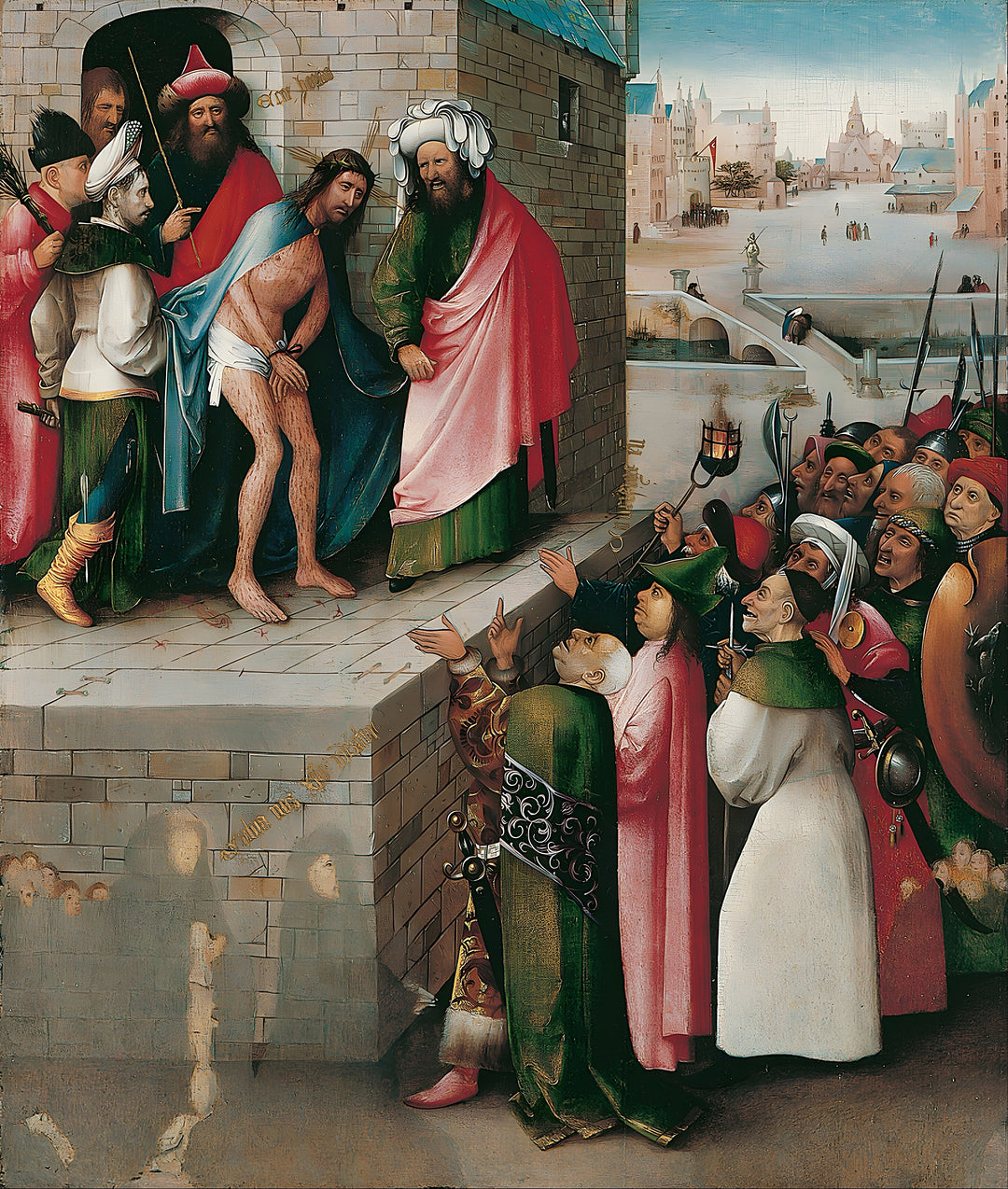
Ecce Homo - Hieronymus Bosch
| Author: | Hieronymus Bosch |
|---|---|
| Title: | Ecce Homo |
| Original location: | Städel Museum, Frankfurt, Germany |
| Year: | 1490 |
The painting Ecce Homo, created by Bosch around 1490, is a work that powerfully captures the moment when Christ is presented to the people after the flagellation. The composition, with its detailed symbolism, reflects not only physical suffering but also the humiliation and scorn that characterize this Gospel episode. Bosch depicts the figures with grotesque and disproportionate expressions, a hallmark of his style, emphasizing the moral depravity of humanity in the face of Christ.
Historically, this work belongs to the late Gothic, a movement that preceded the Renaissance and emphasized spirituality and moral narrative in art. However, the psychological focus and symbolic complexity of Ecce Homo influenced Renaissance and Mannerist artists, who also explored themes of social corruption and spirituality. The contrast between the human figures and the serene face of Christ reinforces the message of the Messiah, the Servant of Yahweh, the bridegroom and original man who has come to give his whole body and spirit to open a door that was once closed, namely, the reconciliation of husband and wife, father and son, master and servant.
There may also be here a veiled critique of power structures and a corrupt populace, reflected in the mobs surrounding Christ. The people want a liberator, one who through violence destroys whoever offends and harms him. The Messiah (the Lamb of God) disturbs everyone by speaking of love for one’s enemy and calling all to reconciliation. The inclusion of the donor family, depicted in the lower corners, highlights the relationship between patrons and the church, a recurring theme in religious art of the period.
Bosch’s attention to detail, combined with his ability to convey profound theological and social truths, makes Ecce Homo a work that transcends its time. This painting raises universal questions about power, faith, and the human condition, ensuring its relevance in art history.